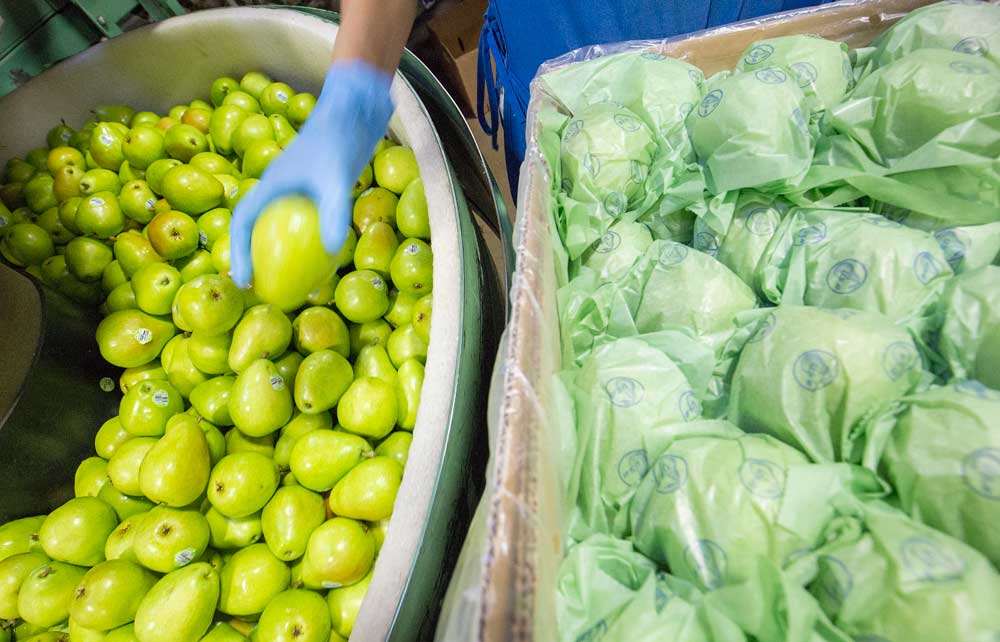
D’Anjou pears from the 2015 harvest being packed in Peshastin, Washington. (TJ Mullinax/Good Fruit Grower file photo)
The Northwest pear industry agreed to contribute about $240,000 of research funds toward reregistering ethoxyquin, a chemical used to control postharvest scald.
And that’s a bargain compared to the last time.
About 10 years ago, when ethoxyquin previously came up for reregistration with the Environmental Protection Agency, the industry spent more than $2 million.
“The landscape has changed quite a bit,” said Mike Willett, manager of the Washington State Tree Fruit Research Commission in February at the annual Pear Research Review in Hood River, Oregon.
Ethoxyquin, a quinolone-based antioxidant, has historically had few uses in the United States aside from preventing pear scald, a serious postharvest disorder.
In pears, the disorder causes an external brown discoloration that occurs mostly on d’Anjous, and there are no alternative treatments, Willett said.
Pet food manufacturers also use it as a preservative and it sometimes shows up as a color preservative in chili powder, paprika and ground chili.
So, 10 years ago, only one company — Deco — was trying to sell ethoxyquin and didn’t consider the financial burden of reregistration worth it. That fell to the pear industry.
This time around, pear growers have help. A few paper companies interested in making an ethoxyquin-infused paper for packaging pears and PACE, a Wapato, Washington, chemical company, also are interested in reregistering the chemical.
The EPA requires crop chemicals to reregister roughly every 15 years or so, Willett said, but may ask for it sooner or later depending on new questions.
To reregister a chemical, the companies or agencies wishing to use it form a task force to hire research firms to answer the EPA’s questions.
The previous time ethoxyquin had to re-up, the EPA was interested in the substance’s effect on the people who ate pears, which involved expensive dietary tests.
This time around, the agency is more worried about its environmental and worker exposure impacts, Willett said. The EPA first asked for the reregistration in January 2016 and gave the team a two-year window.
However, the ethoxyquin task force got a little lucky since then.
The EPA waived some of the environmental study requirements in the wake of research studies in Europe that showed the chemical has a shelf-life of mere minutes and therefore poses little environmental threat.
An estimate of the overall cost, split between all those interested parties, is only about $650,000 now.
The industry’s $240,000 contribution, approved by the Fresh Pear Committee in June last year, should be sufficient, Willett said, assuming all those other registrants stay on board.
Studies will be done as part of the process over the next 12 months, Willett said. Hopefully, the industry will receive a decision on reregistration within two years, Willett said. •
– by Ross Courtney






Leave A Comment